This month we provide an update on the Hôpital de la Miséricorde and analyze controversial plans by Hydro-Québec to integrate an electricity substation into the haunted site. The ghost-ridden Hôpital de la Miséricorde has been empty for years and is starting to crumble. Located on prime real estate in Downtown Montreal...
Welcome to the one hundred and fourth installment of the Haunted Montreal Blog!
With over 500 documented ghost stories, Montreal is easily the most haunted city in Canada, if not all of North America. Haunted Montreal dedicates itself to researching these paranormal tales, and the Haunted Montreal Blog unveils a newly researched Montreal ghost story on the 13th of every month!
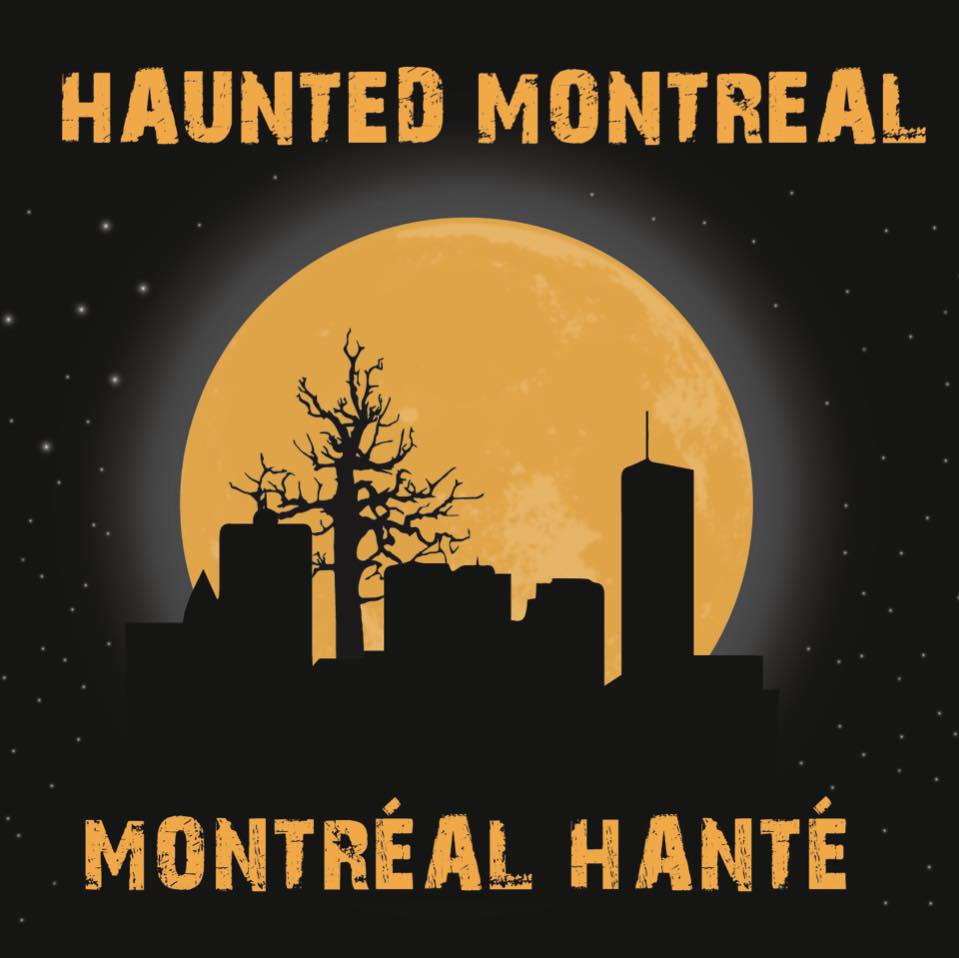
This service is free and you can sign up to our mailing list (top, right-hand corner for desktops and at the bottom for mobile devices) if you wish to receive it every month on the 13th! The blog is published in both English and French!
With the spring here, Haunted Montreal is open for business with a whole new season of ghost tours and haunted experiences! To learn more, see the schedule at the bottom of our home page!
We also offer our Haunted Pub Crawl every Sunday at 3 pm in English. Tours in French happen on the last Sunday of every month at 4 pm.

Private tours for all of our experiences (including outdoor tours) can be booked at any time based on the availability of our actors. Clients can request any date, time, language and operating tour (except Haunted Mountain due to wintry conditions). These tours start at $215 for small groups of up to 7 people.
Email info@hauntedmontreal.com to book a private tour!
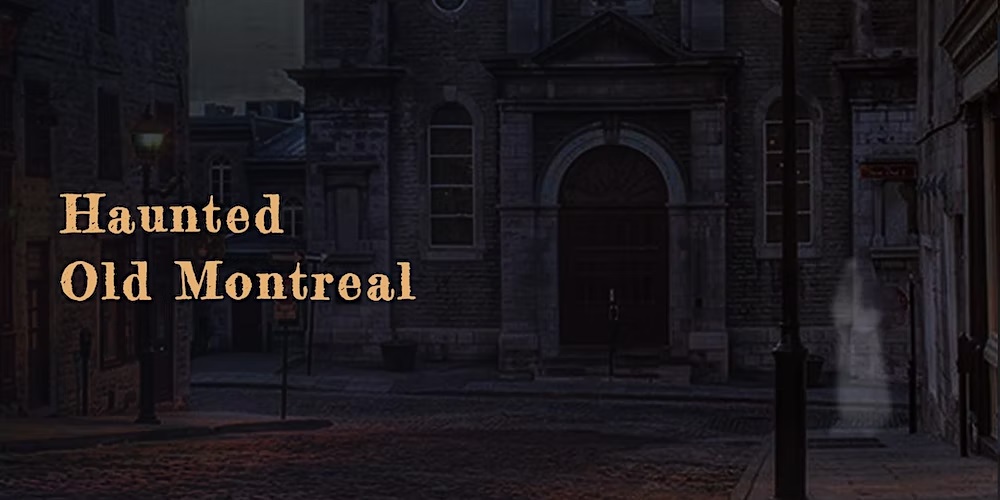
We also have an online store for those interested in gift certificates and company merchandise. More details are below in our Company News section!
Last but not least, Haunted Montreal is starting a new format with its blogs! Details below!
This month we look up to examine Montreal’s many deranged gargoyles and grotesques peering down on the city. We also explore one forgotten and chilling gargoyle legend from the 1890’s.
Haunted Research
High above Montreal’s streetscape, hundreds of gargoyles and grotesques are carved into the architecture of various older buildings and churches. Sculptors created gargoyles to drain water and allegedly to ward off evil spirits, a tradition dating back to mediaeval Europe. Grotesques are similar stone creatures but do not feature any plumbing.
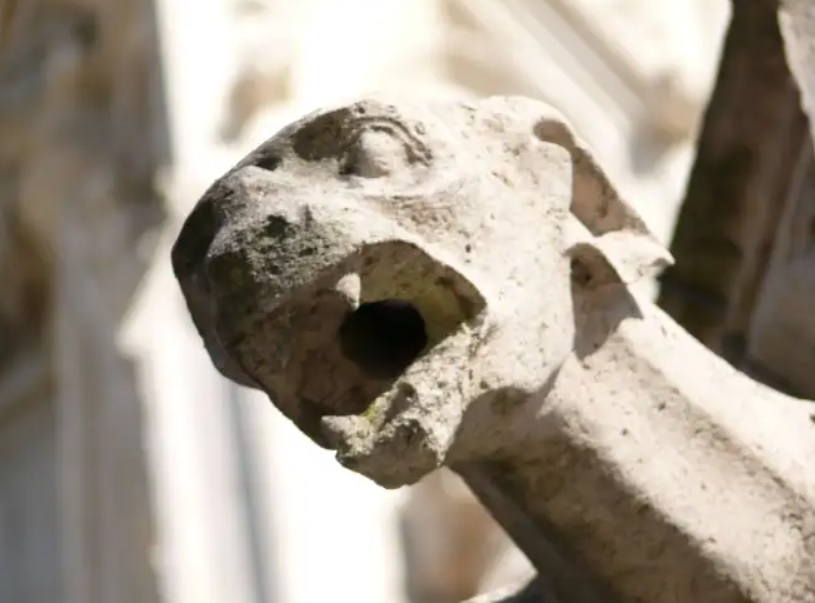
Some legends say that gargoyles can communicate with others when the rain passes through their mouths. Other myths claim that gargoyles and grotesques sometimes come to life at night. Montreal’s gargoyles are shrouded in mystery and a local legend from the late 19th Century highlights one of their deranged antics after sunset.
The word “gargoyle” is rooted in the French word “gargouille” – which translates as “throat.” There is also an old French legend featuring a dragon named La Gargouille that influences the way gargoyles are interpreted today. The tale is set in the 7th Century AD in the town of Rouen, located on the banks of the Seine River in Normandy, France.
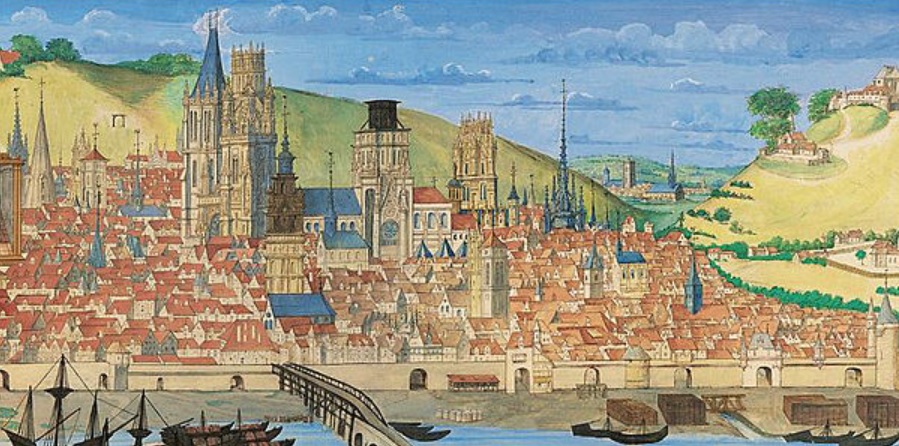
A fearsome, serpent-like monster was allegedly living in the nearby marshes on the riverbank. However, unlike common fire-breathing dragons, La Gargouille spewed torrents of water out of his gaping and fang-filled mouth.
La Gargouille was described as being enormous and ugly with thick grey-green skin. He had wings like a bat, a long serpent-like body and webbed feet. His neck was long and scaly and his eyes glowed like luminescent moonstones.

La Gargouille caused havoc by sinking ships and then eating their crews and passengers. He flooded farmlands by spewing water all over them and devoured all the people and animals who crossed his path.
The authorities of Rouen tried to negotiate a deal with La Gargouille to prevent him from attacking the city. The creature demanded one tender young virgin every year, but instead he was given a prisoner who had been condemned to death.
However, this sacrifice did not alleviate the anxiety of Rouen’s citizen’s, who were afraid to venture outside of the city walls for fear of being eaten alive.

When a young priest named Father Romain arrived in Rouen, the citizens pleaded with him to banish the evil monster. The priest agreed to take on the quest.
On the day when the townspeople traditionally gave a prisoner for La Gargouille to eat, Father Romain accompanied the poor human sacrifice to the swamp.
There, in the wetland, they discovered La Gargouille licking his lips in anticipation of devouring the prisoner. They could smell the creature’s foul breath as it prepared to lunge at its prey. However, just when La Gargouille was about to attack, Father Romain pulled out a large gold cross from behind his back.
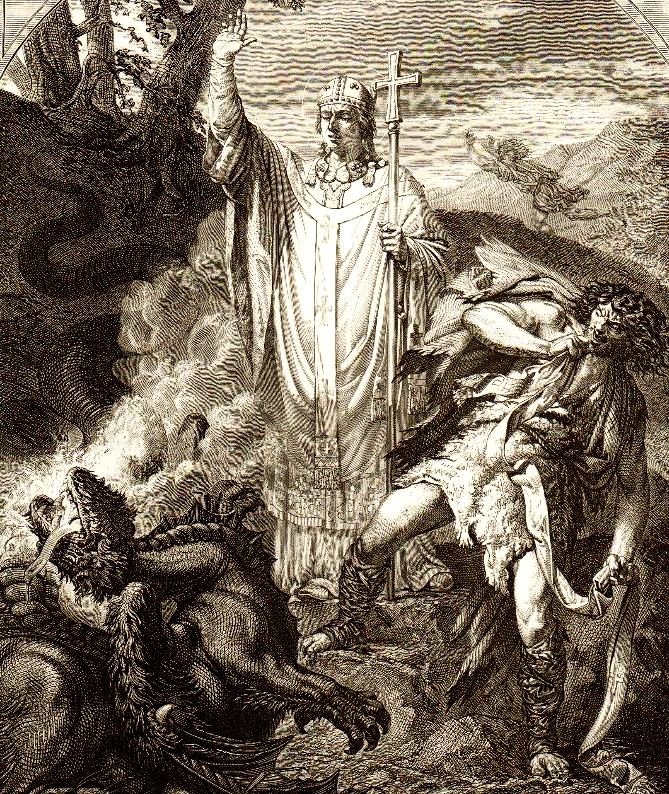
Stunned, as the sunlight reflected God’s rays into his eyes, La Gargouille knelt down at the priest’s feet in submission and ultimate defeat.
Father Romain then used his scarf as a leash and led the monster to the city of Rouen with the grateful prisoner in tow.
When they all arrived in the city, the citizens were amazed that La Gargouille offered no resistance whatsoever. Father Romain pronounced the dragon guilty of his many crimes and declared that he would be burned alive in front of the cathedral as punishment.
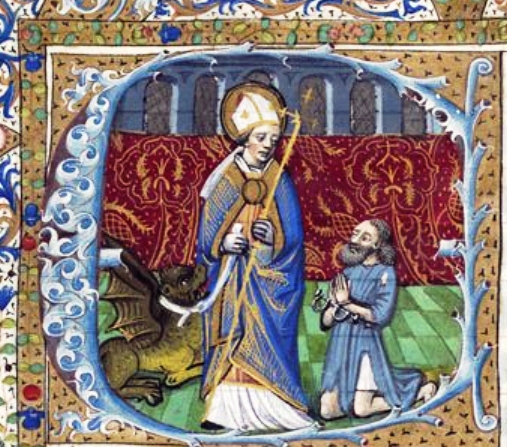
After piling up logs and tying La Gargouille to a stake, the fire was set alight and the monster burned to death in the inferno. However, as the flames died down and the embers cooled, Father Romain realized that La Gargouille’s head and neck remained without so much as a scorch mark on them.
The priest instructed the citizens of Rouen to scatter the ashes of the monster’s body into the Seine River. However, what was to be done with the head and neck of the creature, which did not burn during the execution? Father Romain decided to mount La Gargouille’s head and neck on the cathedral as a reminder of the power of God to ward off evil spirits.
Whenever it rained, water would once again pour out of La Gargouille’s mouth, splashing away from the cathedral’s stone wall.
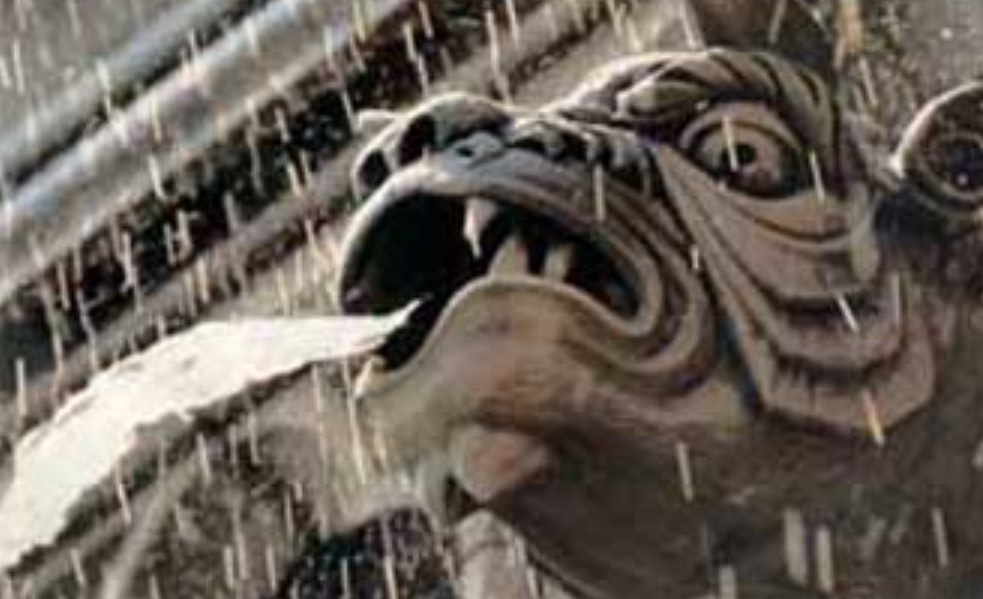
It wasn’t long before other gargoyles began appearing on Gothic churches across France to keep rainwater from damaging the masonry. This bizarre drainage system would soon spread across Europe and eventually much of the planet.
It is worth noting that Father Romain would become the Bishop of Rouen from 631-640 AD. He was later canonized as Saint Romanus.
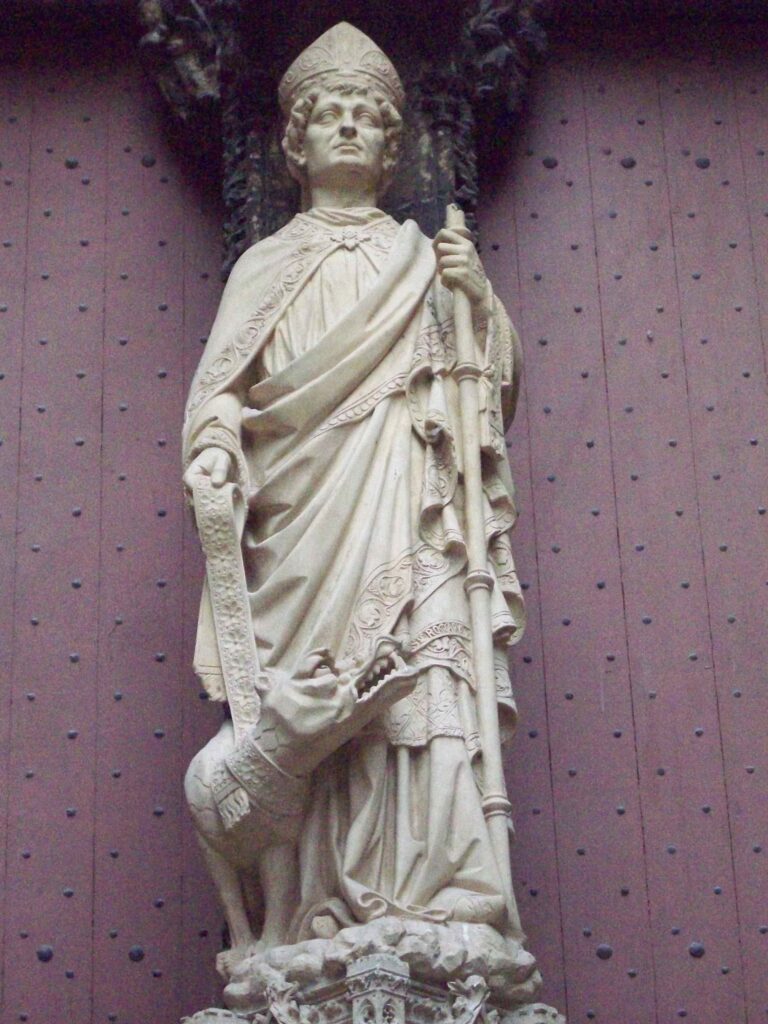
In Montreal, gargoyles usually appear on Neo-Gothic structures, a type of architecture that draws inspiration from the mediaeval Gothic era.
Unfortunately, there is not a lot of information about Montreal’s gargoyles and grotesques.
In 1998, authors Kirk Johnson and David Widgington wrote Montreal Up Close, a guidebook for those interested in the city’s gargoyles and other ornamental features of architecture. Translated by Hélène Rioux in 2002, the French version is titled Montréal Vu de Près.
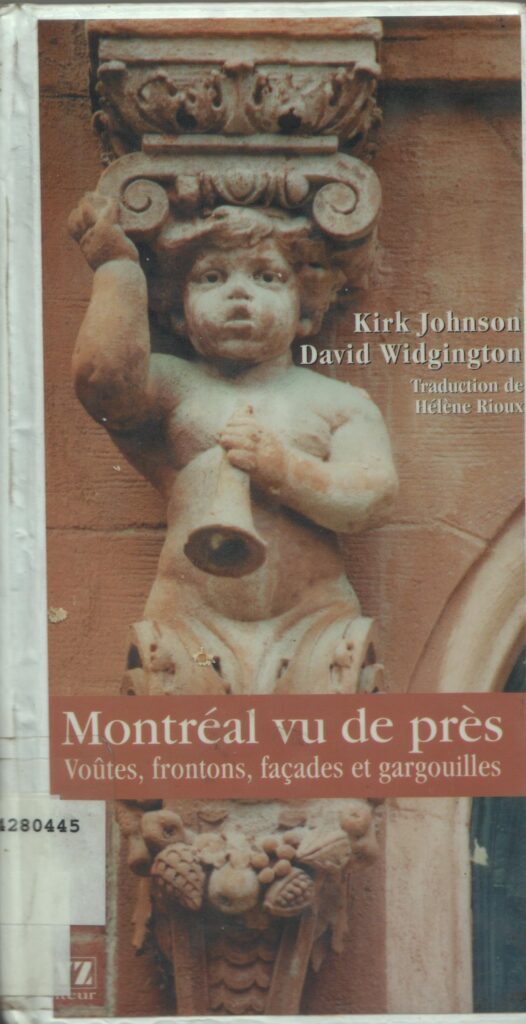
However, the book provides only a cursory look at gargoyles and grotesques in what is essentially a suggested itinerary for walking around the city to admire its architecture.
More recently, a YouTube channel called Montréal dans ta Pipe featured an episode called La chasse aux Gargouilles! whereby the host went hunting for gargoyles during the Covid 19 pandemic.
The McGill Reporter also created an online quiz to try to identify the locations of various gargoyles on campus.
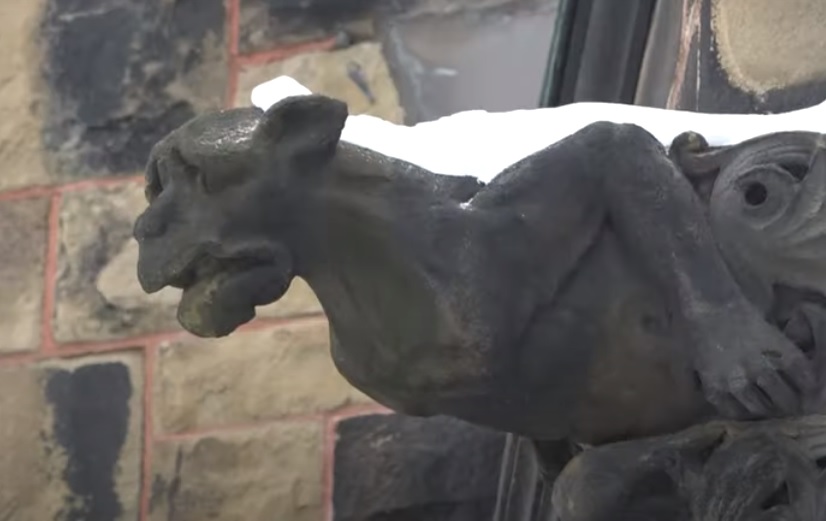
Meanwhile, Toronto appears to be much more passionate about its gargoyle heritage. Not only is there is a gargoyle map listing the stone creatures lurking above all over the city, but there is also a related Indigenous art installation in the Don Valley.
Duane Linklater, who is Omaskeko Cree from Moose Cree First Nation, created concrete casts of some of Toronto’s most distinct gargoyles and placed them haphazardly in the Don Valley’s fields.
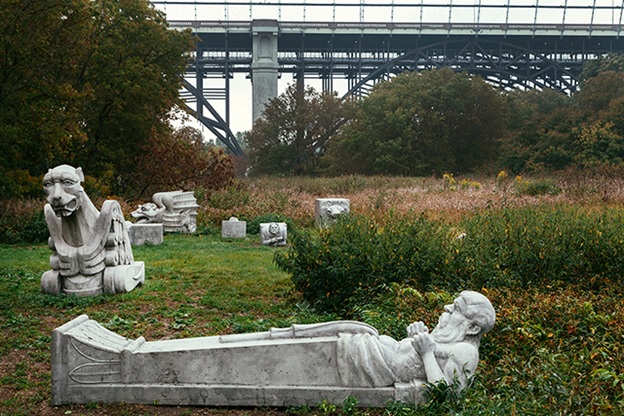
His creation, called Monsters for Beauty, Permanence, and Individuality, is aimed at “provoking a conversation about Canadian colonialism and the relationship between settlers, the land and Indigenous Peoples.”
Furthermore, University of Toronto’s University College features two grotesques carved into a wall tied to an infamous ghost story called “The Legend of Reznikoff and Diabolos”.

By comparison, Montreal is not nearly as engaged with its gargoyles and grotesques as Toronto is.
However, one largely forgotten Montreal legend from the late-1800s involves a gargoyle who was said to occasionally harass and disturb citizens. On rainy days, it would spit water at passersby and insult them. After nightfall, rumours abounded that the gargoyle would come alive and leave its perch to cause mischief and sow chaos in the city. Its antics included voyeurism, stalking, terrifying citizens and even smashing windows in the neighborhood.
The gargoyle in question is festooned on Christ Church Cathedral, located at 635 Saint-Catherine Street West.

The Anglican denomination constructed Christ Church Cathedral in 1860. A brutal fire had destroyed their former cathedral on St. James Street in 1856, leaving it in ruins. Almost everything was lost, apart from church records and registers, a single wall tablet and a copy of Da Vinci’s Last Supper. A brave soldier had cut the painting from its frame with his sword as the church burned around him.
It was a mercy that nobody perished in the inferno. Indeed, the firemen were quick to rush outside just as the burning roof caved in.
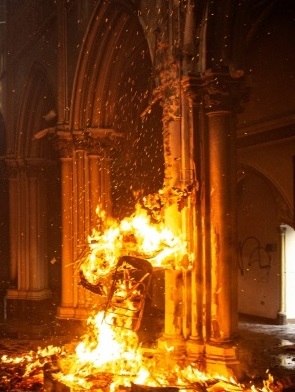
To replace their cathedral, Anglican authorities selected a site in the new downtown sector. Built in the Neo-Gothic style by architects Frank Wills and Thomas Seaton Scott, the Anglican Cathedral features several gargoyles and grotesques.
The two most prominent gargoyles are nestled above the main entrance to the cathedral, one to the right and one to the left. They are perched above grotesques that appear to resemble dogs.
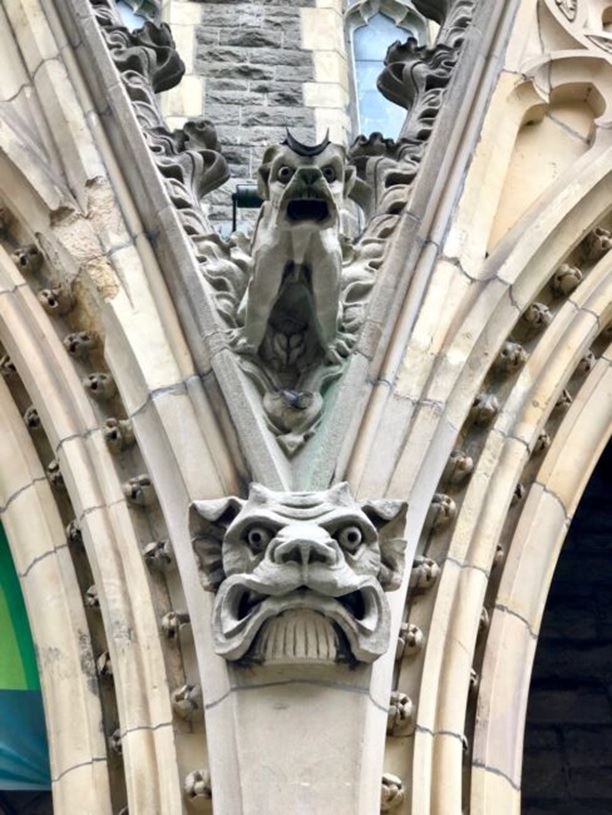
The gargoyle to the left is smiling whereas the one on the right has a more menacing expression.
According to the urban legend, sometime in the early 1890s, the menacing gargoyle somehow took on a life of its own after it was struck by a lightning bolt during a violent storm one night.

The problem all started one rainy day soon after when the gargoyles at the cathedral were spouting water off the roof from the downpour.
A lady was passing by en route to do some shopping at the nearby Morgan’s Department Store, which had recently opened to great fanfare. The area was very modern and home to a whole new downtown district, which had migrated north from today’s Old Montreal. It contained the new department store and other high-end shops, luxurious homes for wealthy citizens and a host of other amenities. The lady was well-dressed and carried a camisole to keep the rain from soaking her beautiful petticoat.

However, as she was passing Christ Church Cathedral on Sainte-Catherine Street she heard a loud gurgling noise. When she looked up at the church, she saw water gushing from the two gargoyles onto the pavement.
Suddenly, the menacing gargoyle to the right began spewing a stream of dirty water at her! The lady shrieked as her camisole collapsed and her beautiful petticoat got soaked. After a few seconds, the gargoyle stopped spraying the poor lady and started laughing at her in a gurgling tone.
Screaming, the lady ran east down Sainte-Catherine Street and into Morgan’s Department Store, soaked and disheveled.
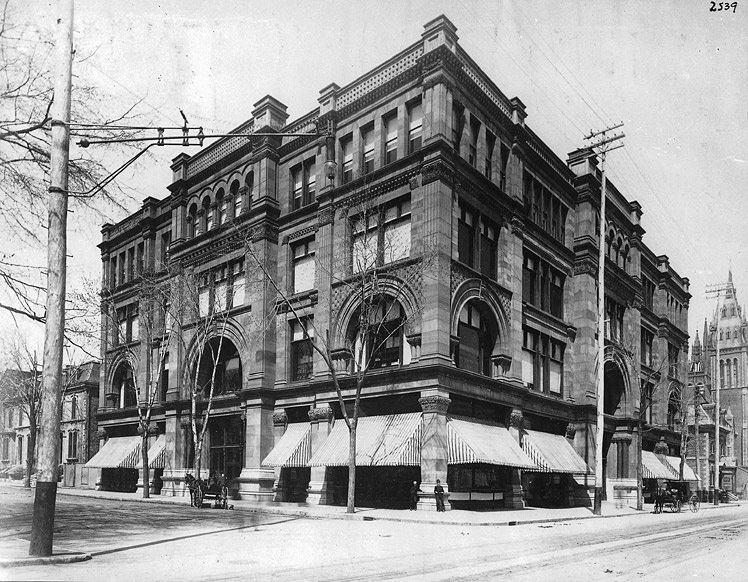
The clerks attended to her with expensive towels from the merchandise racks and tried to calm her down. When she was finally able to explain what had happened to her, there was a sense of disbelief among staff.
However, it wouldn’t be the first time the gargoyle allegedly caused hurt and mischief. On other rainy days, some passersby claimed that they could hear the stone monster hurling insults at them from above the cathedral’s entrance. When these alleged victims of the gargoyle told their story to others, there was usually a lot of skepticism. Most listeners felt the claim was outlandish and suggested that it was probably just the gurgling sound of the rain pouring through the gargoyles’ plumbing systems.
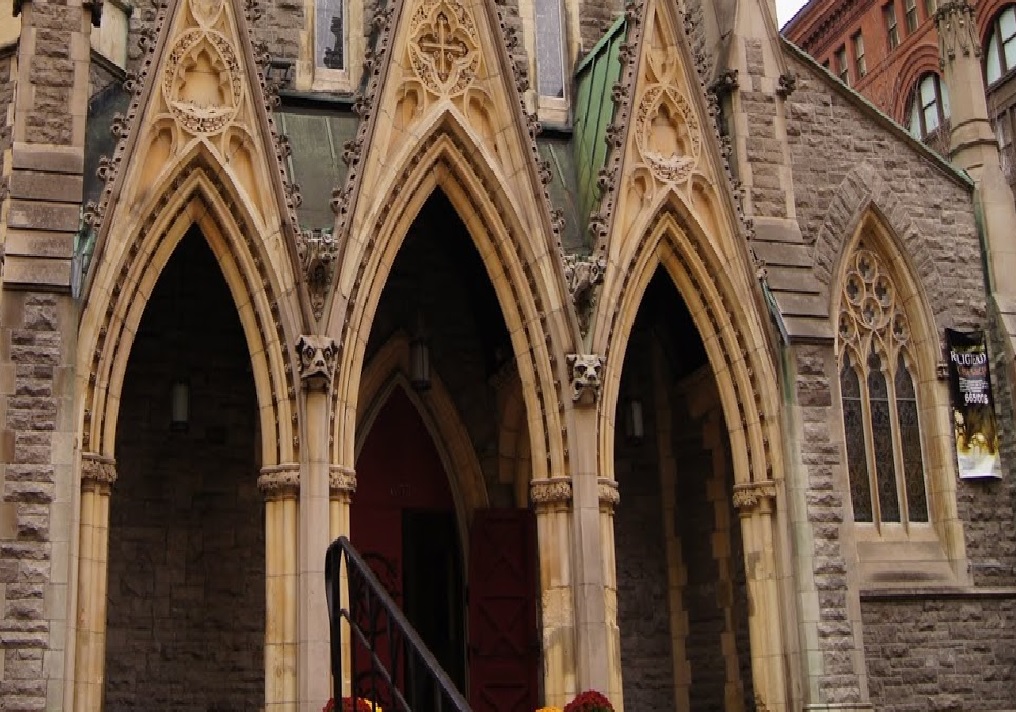
Then, one night, something unexpected happened. A police officer on the beat, who had heard the stories, had a habit of looking up at the gargoyle in question on the east side of Christ Church Cathedral’s entrance to see if it was up to no good. When he looked to inspect the gargoyle, he realized that it was no longer on its perch.
Assuming it had been stolen, he informed the sergeant who said that an investigation would be launched when the sun came up. However, when the police inspectors arrived in the morning, the gargoyle was up there on its perch. Clearly, it had not been stolen.
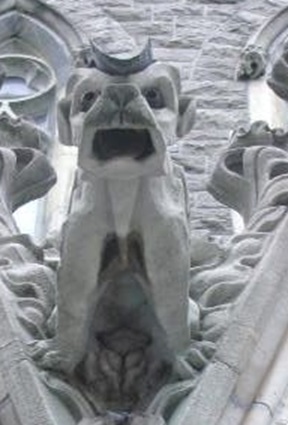
The bizarre situation took on an air of mystery. Was the officer lying or had his eyes deceived him on a dark night? What about the rumours of the gargoyle insulting people and spitting showers of rainwater at them? It was all very puzzling.
It wasn’t long before Father Edmund Wood, founder of the nearby Anglican St. John the Evangelist Church, heard about the errant gargoyle at Christ Church Cathedral.
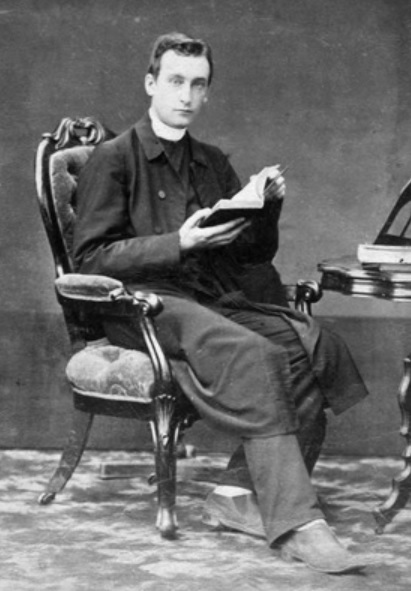
Indeed, one of his female parishioners claimed that the gargoyle was stalking her at night. It was the same lady who had been attacked with the gargoyle’s spouting water that had ruined her petticoat.
The lady claimed that she felt like she was being watched and followed. Sometimes she heard loud, flapping wings above her at night while walking the streets of Montreal. On more than one occasion, she was woken up in the middle of her slumber to the sounds of a tapping noise on her window, which was on the second floor of a townhouse.

One rainy night, when she went to see who or what was knocking on the window, through the glass pane she saw the same gargoyle who had spat dirty water all over her. Perched on the window’s ledge, the deranged creature made all sorts of lewd gestures at her as it cackled in the darkness. It spat all over the window, its drool dripping down the glass. Horrified, the lady jumped back.
Suddenly, the window smashed inwards and the gargoyle barged its way into her room!
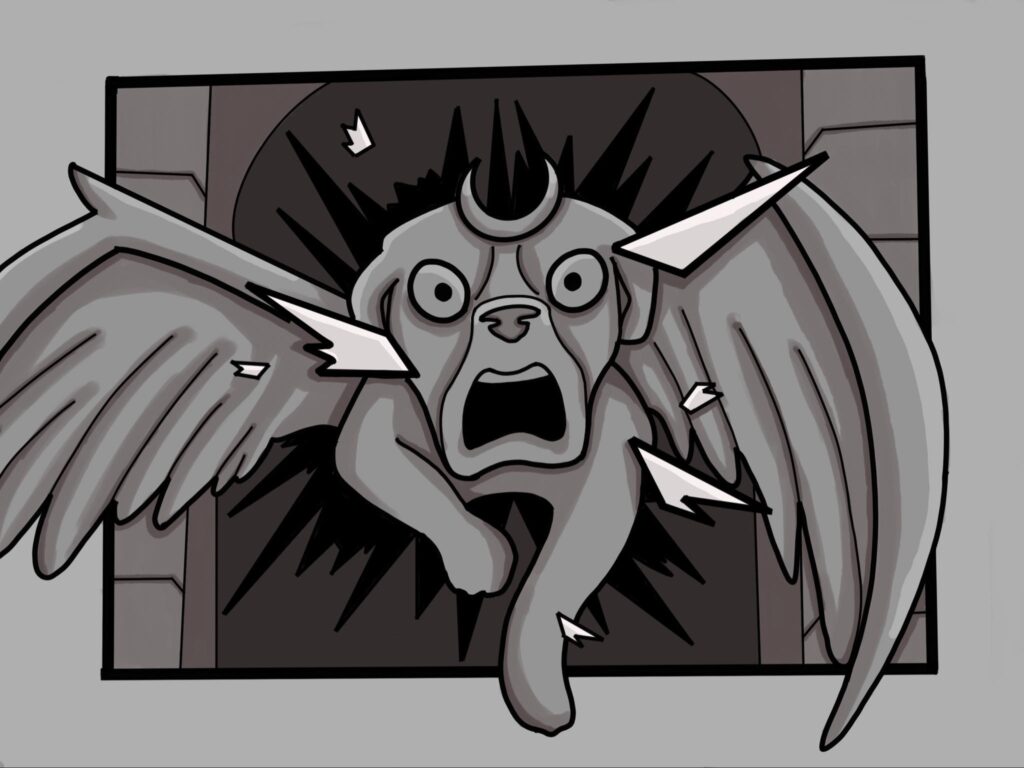
Screaming, the lady bolted out of her bedroom, slamming the door shut behind her! She exited her loft and ran down the stairs. Traumatized, she huddled at the front door. After an hour, she looked outside to see if the gargoyle was still in the vicinity. She did not see it, so rushed out of the building and proceeded to the home of Father Wood.
When Father Edmund Wood heard about the distraught lady’s problem, he decided to take action immediately against the offending gargoyle.
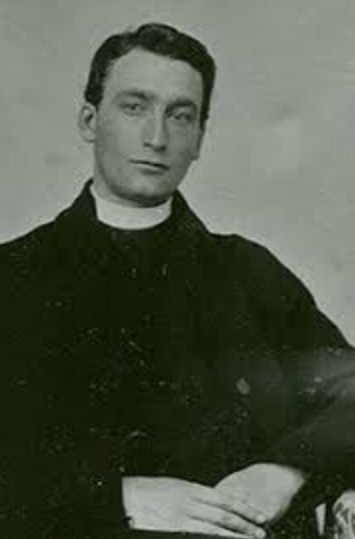
It is worth noting that Father Wood was an outlier in the Anglican religion. Embracing a controversial branch called the Anglo-Catholic Church, or “High Church”, he had a deep love of the ritualistic. When he held services at his own church, Saint John the Evangelist, they included Latin sermons, a pipe organ, a choir and billowing incense. He also practiced ancient Catholic rituals such as Solemn High Mass, Solemn Evensong and Benediction.
According to the legend, Father Wood knew a thing or two about ancient rituals, exorcism and the occult. He possessed copies of Rituale Romanum and De Exorcismis et Supplicationibus Quibusdam in his personal library. These Catholic edicts, written in Latin, dealt with these esoteric subjects in depth.

After poring over these obscure materials for several days, Father Wood began concocting a plan. His goal was to stop the gargoyle from further disturbing and terrorizing the citizens of Montreal, especially the lady who had brought the complaint forward.
To do so, Father Wood realized that he would need to create a very elaborate and specialized ritual. Furthermore, there was no guarantee of its success, as there were almost no precedents about how to deal with this type of unfortunate gargoyle occurrence.
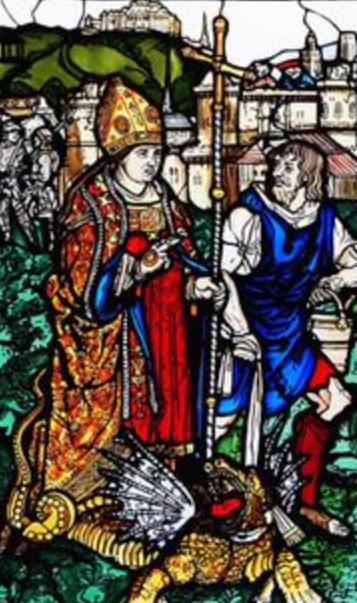
However, Father Wood was well versed in the deeds and miracles of Saint Romanus and in the legend of La Gargouille. After praying to the Almighty God and to Saint Romanus himself for guidance, the Father combined all of his wisdom and knowledge to finalize his strategy.
Father Wood borrowed a large gold cross from a close colleague in the Catholic Church and prepared an elaborate incantation. He also mixed several secret ingredients together and crushed them with his mortar and pestle. Using the powder to concoct a unique type of incense, Father Wood was hopeful his recipe would stop the gargoyle once and for all.
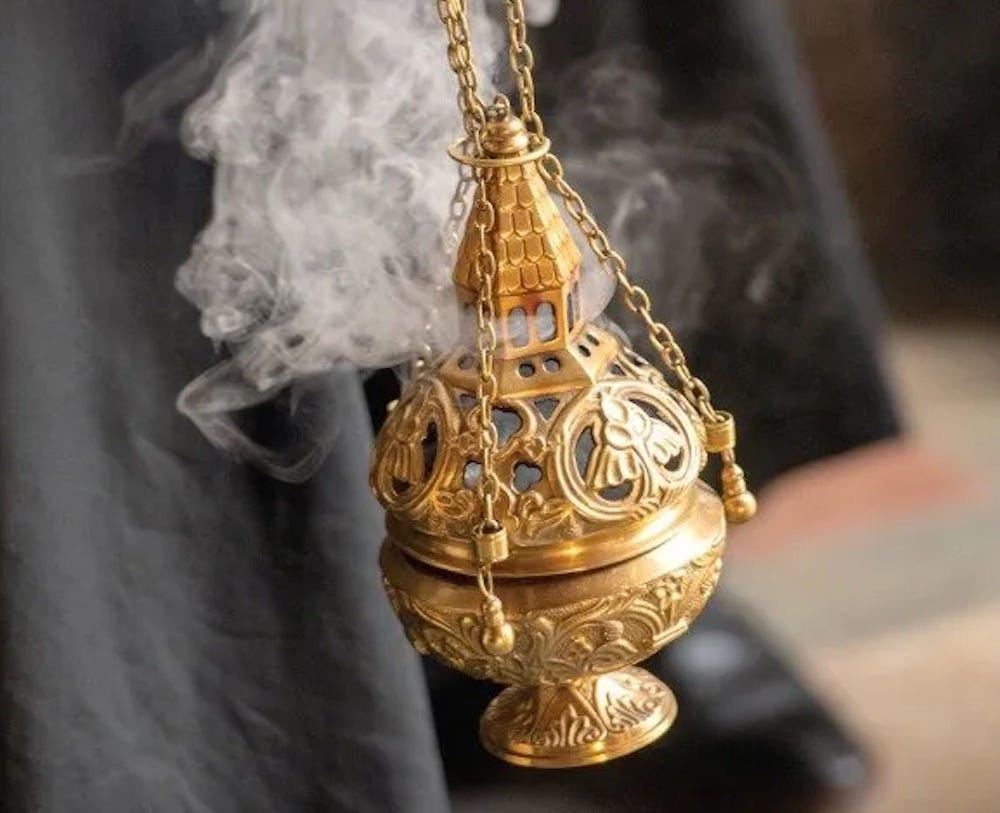
Finally, with his plan in place, Father Wood waited for a rainy night when he knew the gargoyle would be active.
Sure enough, after a few days, the sky opened up into a serious downpour. An hour before sunset, Father Wood gathered his supplies and lit a lantern. He proceeded in the pounding rain to Christ Church Cathedral.
When he arrived below the gargoyle, the first thing he did was light the special incense stick in his lantern. As the smoke billowed up, engulfing the gargoyle, Father Wood began his incantation and held up the gold cross. As he chanted, he raised the gold cross and pointed it directly at the gargoyle.

The gargoyle began shrieking and spouting water all over Father Wood! Flapping its wings in the rain, it tried to escape off its perch.
However, as Father Wood chanted, the gargoyle fell firmly under his control. He ordered it to stop moving and to return to its original posture. Subdued, the gargoyle did just that. With one last command, the priest ordered it to never reawaken. The task was now complete, and the triumphant Father Wood thanked the Lord before returning to his humble church.
While there were some fears that the gargoyle would reawaken during a massive construction project in 1987 when the cathedral was put on stilts to facilitate an underground mall, engineers assured the church was very sturdy. Despite the vibrations and dust caused from building the Promenades Cathédrale mall, the gargoyle did not reawaken.
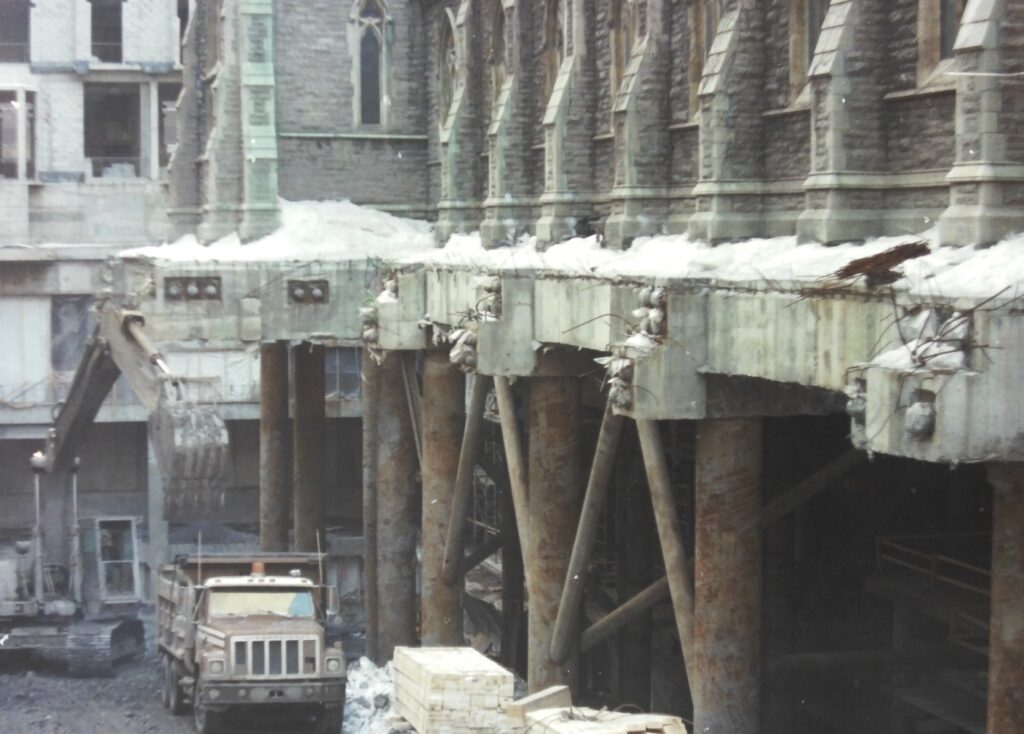
And thus the problem was resolved and the deranged gargoyle never harassed the citizens of Montreal ever again.
In conclusion, those wandering the streets of Montreal would be wise to look up as often as possible to see the magical world of gargoyles and grotesques peering down on the city. Perhaps one day these magnificent creatures will be held in higher esteem, as they are in Toronto.
Company News
With the spring here, Haunted Montreal is open for business with a whole new season of ghost tours and haunted experiences!
To learn more, see the schedule at the bottom of our home page!

Our Haunted Pub Crawl is offered every Sunday at 3 pm in English. Tours in French happen on the last Sunday of every month at 4 pm.
Private tours for any of our experiences (including outdoor tours) can be booked at any time based on the availability of our actors. Clients can request any date, time, language and operating tour (except Haunted Mountain due to wintry conditions) These tours are based on the availability of our actors and start at $215 for small groups of up to 7 people.
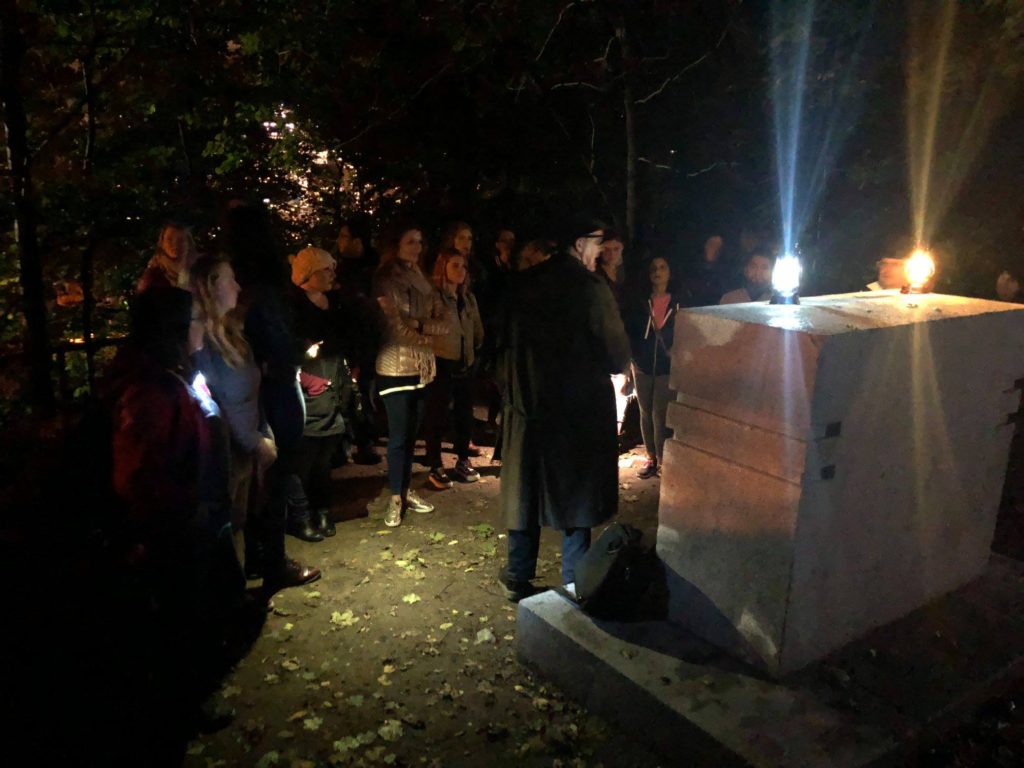
Email info@hauntedmontreal.com to book a private tour!
You can also bring the Haunted Montreal experience to your office party, house, school or event by booking one of our Travelling Ghost Storytellers today. Hear some of the spookiest tales from our tours and our blog told by a professional actor and storyteller. You provide the venue, we provide the stories and storyteller.

Find out more and then contact info@hauntedmontreal.com
Our team also releases videos every second Saturday, in both languages, of ghost stories from the Haunted Montreal Blog. Hosted by Holly Rhiannon (in English) and Dr. Mab (in French), this initiative is sure to please ghost story fans!
Please like, subscribe and hit the bell!

In other news, if you want to send someone a haunted experience as a gift, you certainly can!
We are offering Haunted Montreal Gift Certificates through our website and redeemable via Eventbrite for any of our in-person or virtual events (no expiration date).
We also have an online store for those interested in Haunted Montreal merchandise for the holidays. We are selling t-shirts, magnets, sweatshirts (for those haunted fall and winter nights) and mugs with both the Haunted Montreal logo and our tour imagery.
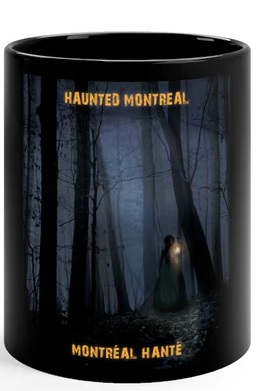
Purchases can be ordered through our online store.
Furthermore, Haunted Montreal is altering its blog experience due to a commitment on a big writing project! New stories at the Haunted Montreal Blog will now be offered every two months, whereas every other month will feature an update to an old story. As always, these stories and updates will be released on the 13th of every month!

Haunted Montreal would like to thank all our clients who attended a ghost walk, haunted pub crawl, paranormal investigation or virtual event!
If you enjoyed the experience, we encourage you to write a review on our Tripadvisor page and/or Google Reviews, something that really helps Haunted Montreal to market its tours. We are a small, specialized tourism company for fans of deranged history, ghost stories and the macabre and appreciate all the support and feedback we can get!

Lastly, if you would like to receive the Haunted Montreal Blog on the 13th of every month, please sign up to our mailing list.
Coming up on May 13: Update for the Old Pointe Claire Hotel
Haunted Montreal Blog #8 – Hauntings at the Old Pointe Claire Hotel – was written in December, 2015. The article featured the history of the old Pointe Claire Hotel and its surroundings. More recently known as The Pioneer, Clyde’s Bar and Grill and Le Pionnier, the old hotel has since been demolished and replaced with condominiums. Many people wonder if the site is still haunted.
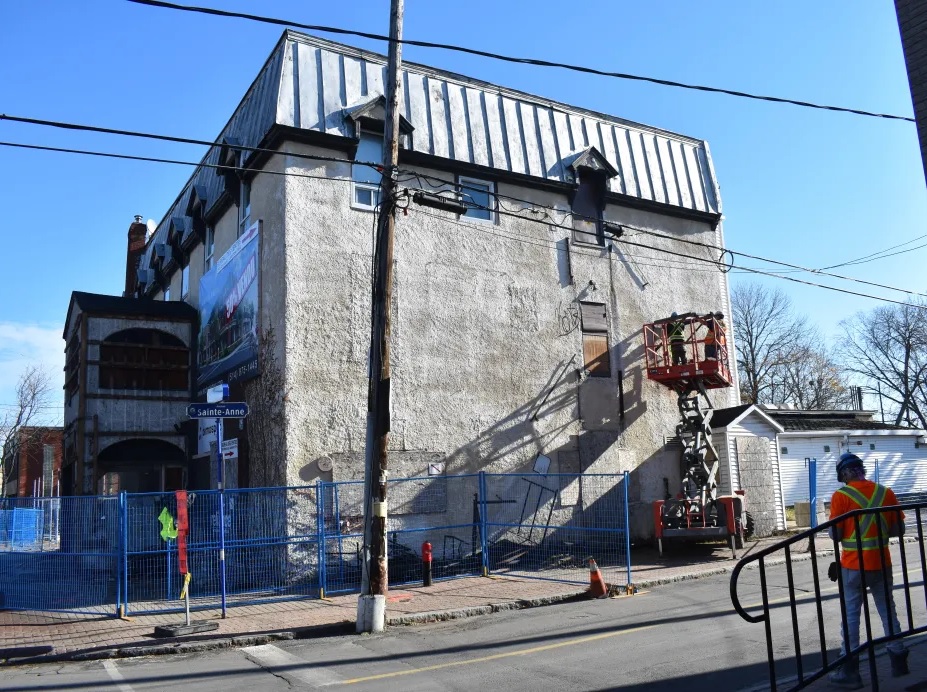
Author:
Donovan King is a postcolonial historian, teacher, tour guide and professional actor. As the founder of Haunted Montreal, he combines his skills to create the best possible Montreal ghost stories, in both writing and theatrical performance. King holds a DEC (Professional Theatre Acting, John Abbott College), BFA (Drama-in-Education, Concordia), B.Ed (History and English Teaching, McGill), MFA (Theatre Studies, University of Calgary) and ACS (Montreal Tourist Guide, Institut de tourisme et d’hôtellerie du Québec). He is also a certified Montreal Destination Specialist.
Translator (into French):
Claude Chevalot holds a master’s degree in applied linguistics from McGill University. She is a writer, editor and translator. For more than 15 years, she has devoted herself almost exclusively to literary translation and to the translation of texts on current and contemporary art.




Comments (0)